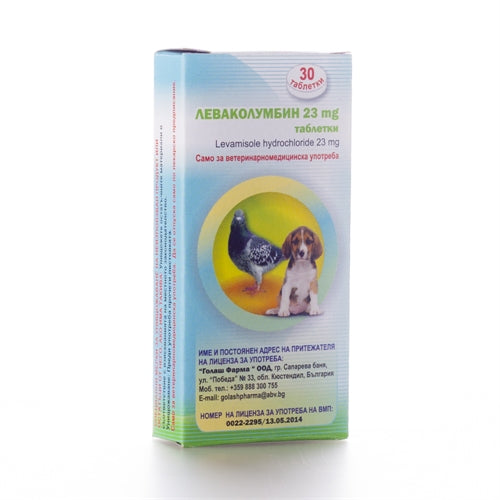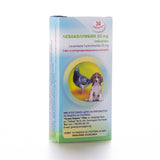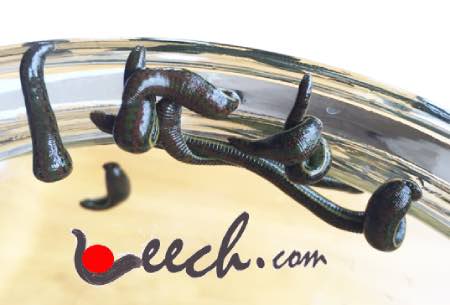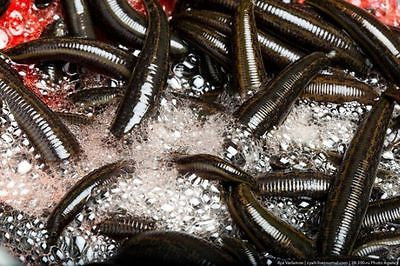Levamisole, brand names include: Ergamisol / Dicaris also known as Levakolumbin, Tramisol, Avitrol, Harka Verm ) is a drug of choice for treatment of the worm ascariasis. This is the long round white worm that lives in the liver, brain, kidneys, lungs and intestines. With recommended dosages, it is virtually free of side effects. Single doses of 50 to 150mg (2.5mg per kilogram weight) will eliminate all parasites in 90 to 100% of ascariasis patients irrespective of worm burden. This means 6 pills for humans. Activity against hookworms has been demonstrated for levamisole but the most effective treatment regimen has not been determined. Further drug trials are needed for better assessment of efficacy. Levamisole has little or no curative action on infections with whipworms and pinworms. It may have some activity against strongyloides but confirmatory studies are needed. It has been shown that levamisole has significant activity against microfilariae of Wuchereria bancrofti and Brugia malayi. It is not, however, as effective as diethylcarbamazine ('Hetrazan'), and side reactions are greater. In tolerated doses, levamisole does not have significant action on adult forms or microfilariae of Onchoceea volvulus. The drug applied topically, however, may find a place in treatment of ocular onchocerciasis. Limited trials with levamisole for toxoplasmosis and chronic cutaneous leishmaniasis have given promising results, and further studies are indicated.
An antihelminthic drug that has been tried experimentally in rheumatic disorders where it apparently restores the immune response by increasing macrophage chemotaxis and T-lymphocyte function. Paradoxically, this immune enhancement appears to be beneficial in rheumatoid arthritis where dermatitis, leukopenia, and thrombocytopenia, and nausea and vomiting have been reported as side effects. (From Smith and Reynard, Textbook of Pharmacology, 1991, p435-6). Levamisole was withdrawn from the US and Canadian markets in 2000 and 2003, respectively, due to the risk of serious side effects and the availability of more effective replacement medications.
Levamisole refers to Levo tetramisole, it is the Levo Isomer of tetramisole. It can selectively inhibit succinate dehydrogenase in parasite’s muscle so as to stop the reduction of succinic acid from fumaric acid. Therefore the parasite’s muscle metabolism lacks of oxygen and leads to decreasing of energy.
L-isomer is active against helminthes with 1-2 times higher active efficiency and lower toxic and side effects than tetramisole. It is a broad spectrum anthelmintic with a very good activity against roundworms, hookworms, whipworms, and strongyloises stercoralis. It is an immunomodulator and has effect on rheumatic disorders.
Levamisole, as an immunotherapeutic agent, distinguishes itself from the bacterial immunoadjuvants in that it does not stimulate immune responses above the normal level in healthy subjects. Numerous animal and clinical studies on levamisole as an anticancer agent suggest that there is a threshold dose of levamisole (2.5 mg/kg per day for humans) which should be met in order to achieve optimum results and which should be adjusted for body weight or surface area. In addition, levamisole appears most effective on hematogenous metastases and on patients with a heavier pre-treatment tumor burden. Finally, while most cancers appear susceptible to the effects of levamisole, the drug should be used as an adjunct to classical therapeutic modalities, to stabilize complete remissions, not to induce them by itself. Therefore, immunotherapy with levamisole may be most efficacious when used as an adjuvant to other forms of cytoreductive therapy.
WILLEM K. AMERY, M.D.
 UPON ARRIVAL: Immediately transfer your leeches out of the container with special gel and into a jar of cold water!
UPON ARRIVAL: Immediately transfer your leeches out of the container with special gel and into a jar of cold water!
HOW TO GET THEM OUT: Pour out the gel with the leeches from the container. If the leeches are still inside, you may add a bit of cold water and swoosh everything around vigorously. If they are still stuck to the walls, you may try to use your fingers. Regular tweezers may harm the body of the leech, so they are not recommended for use - its best to purchase the recommended leech forceps used for easy removal and handling of the leech. In the absence of forceps, be sure to handle your leeches quickly, so they don’t start sucking blood from your fingers.
BEST CONTAINER TO USE: Keep your leeches in a large glass (or plastic) jar with a tight lid. The container needs to be filled about 1/3 full of ice-cold water. The lid needs to be closed and you may puncture needle-size holes in it. Alternatively, instead of a lid, you may cover your jar with cloth tied with an elastic band.
CARE: Change the leech-water at least once a week. Dump out old water by shaking it around vigorously first, with the lid on, until the leeches’ skins come off (they shed their skins about once a week). Skins appear as slimy whitish-clear particles, floating in the water. Carefully pour-out the old water with skins, taking care not to pour out any of the leeches, then, refill the jar again, close and shake. Repeat this process as many times as needed, until all the skins are completely gone and the water is perfectly clear. Fill the jar again with 1/3 cold water (its ok to use tap) and close the lid tightly.
Keep your jar with leeches in a cold, partly dark place, away from direct sunlight. During winter, they can be kept outdoors, partly-covering the jars with a towel, to protect from full sun-exposure. We do not advise you to feed your leeches during winter. Leech species can keep for 1 year without feeding. Keep your fed leeches apart from the hungry ones, as they will prey on each other. Be sure to purchase separate jars, to separate your fed and hungry leeches properly.






